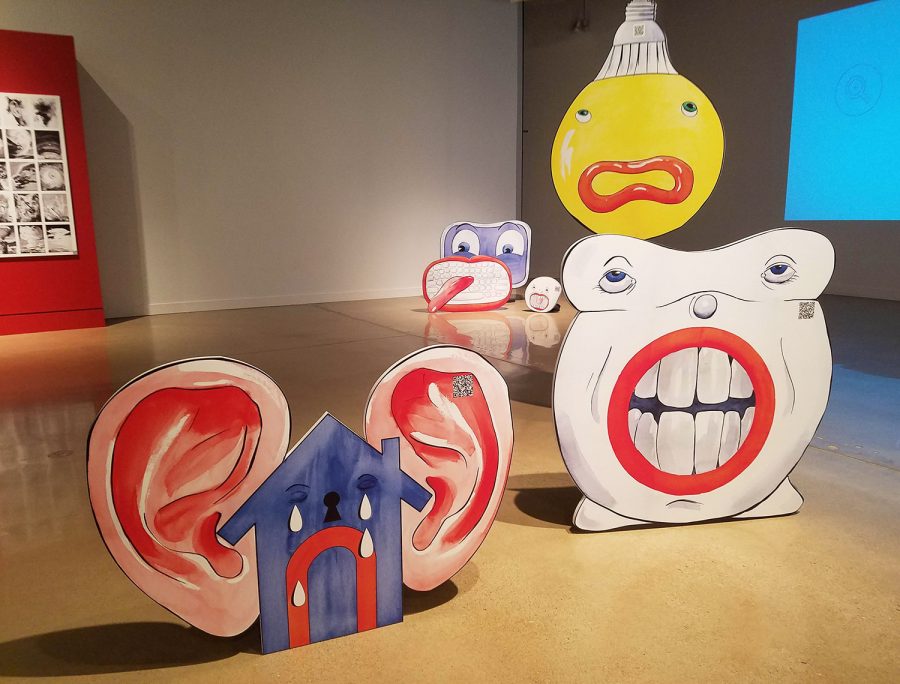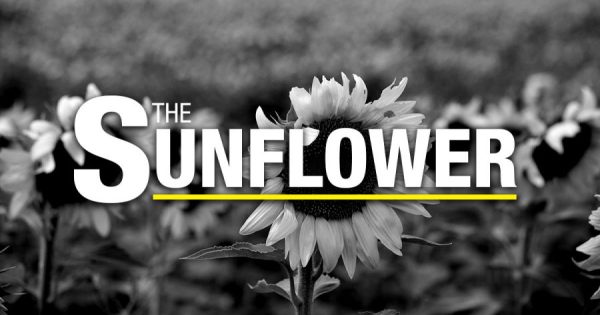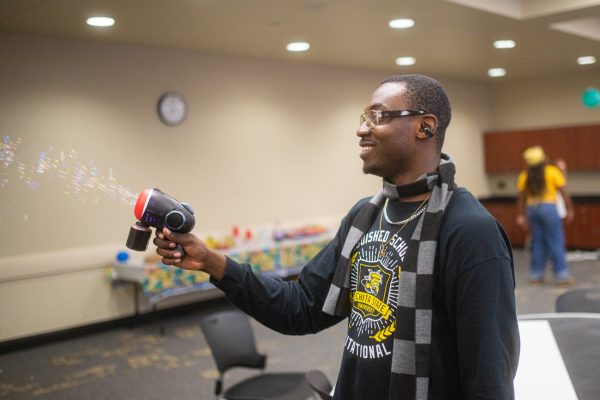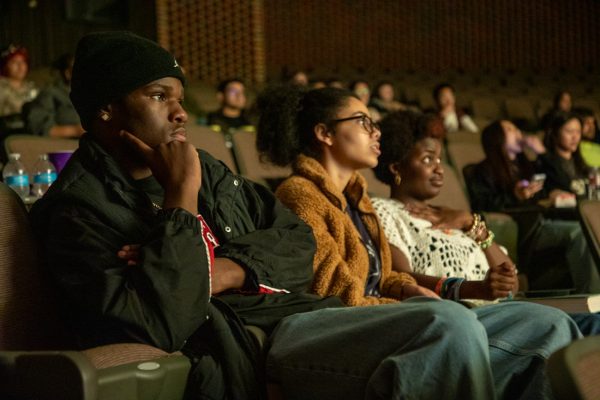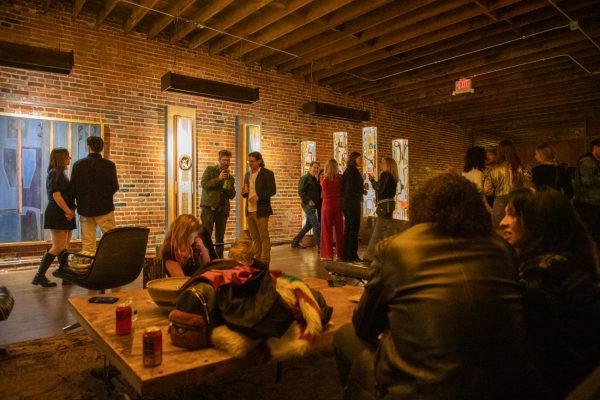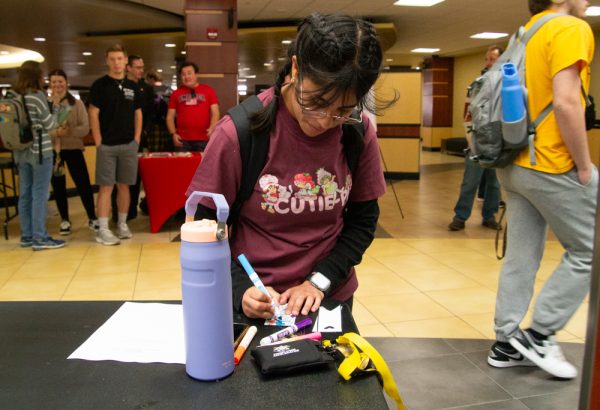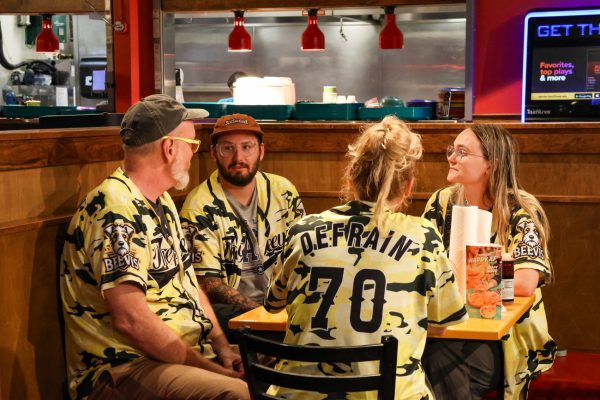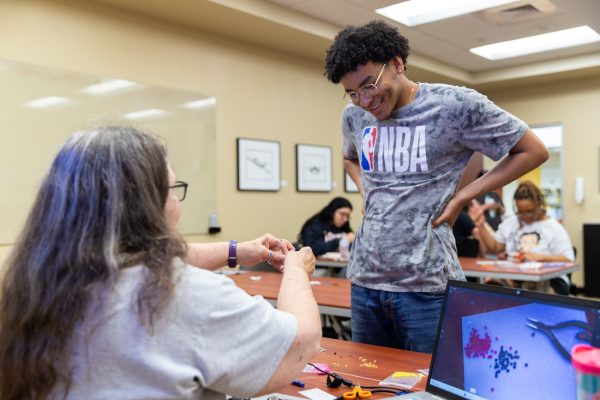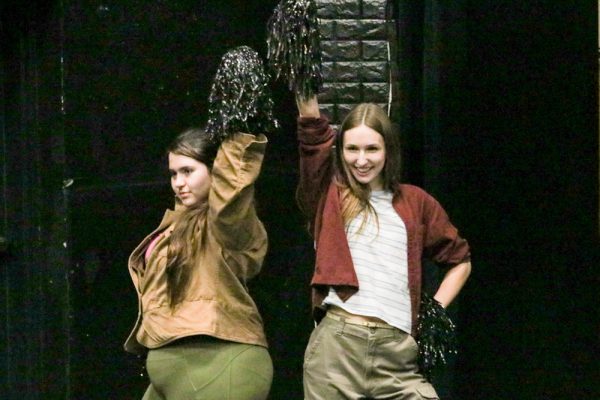Ulrich spring exhibition explores the pros and cons of technology
In her pieces, “Bulb” and “House Smart Objects Listen”, artist Zoe Beloff provides a series of commentaries on “smart objects” which collect untold amounts of data from consumers to advertise more effectively.
Emojis, vintage cartoons, paintings from inside machines and digitally distorted landscapes line the walls of the Ulrich Museum of Art’s spring exhibition opening. The pieces span from the early 20th century to today, emphasising the idea that technologies have long been the subject of prophets-of-doom and utopianists alike.
“This is a campus where technology is seen as an economic driver, the way of the future,” Ulrich curator Ksenya Gursthein said. “This artwork responds to that, sharing some of its ideals, but looking at it critically.”
New York artist Zoe Beloff’s installation explores technology constructed to manipulate emotions. Starting with World War I photographs used for military training, Beloff leads viewers to a series of commentaries on “smart objects,” like the Amazon Echo, which collect untold amounts of data from consumers to more effectively advertise.
Beloff’s greatest achievement here is a powerpoint-esque parody of Silicon Valley optimism called “internet of Things,” or “ioT.” The video looks like something Innovation Campus visionaries watched in earnest when conceiving Braeburn Square as “taking on a life similar to Bradley Fair,” according to a Sunflower article in 2017.
Beloff’s work is peppered with QR codes, which draw viewers into the work as they lean in to automatically bring up artist statements.
In one of these statements about a cartoonish cutout called “Predator Drone,” Beloff writes, “The Predator drone is an extremely smart object designed to track and to kill people. But are not all the ‘smart’ objects predators, preying on our desires only to take our money?”
“Predator Drone” is particularly prescient, as drone strikes have been carried out by the U.S. Airforce from the Mcconnell Airforce Base in Wichita. The use of military drones is often criticized by journalists and human rights groups for causing untraceable civilian casualties and instilling a general sense of terror .
In “Digital Palimpsest,” Chicago-based educator and artist A.P. Vague, a WSU alumnus, looks at what happens when the tools we use to communicate in the digital era malfunction. The centerpiece is an audio-visual blend, with disparate sounds and rhythms interrupting each other, represented as warping waves projected on the wall.
This experiment is bracketed by a series of half destroyed, blown-up photographs, which vary from landscapes bathed in overwhelming light to the totally abstract.
“At the heart of this work are questions about how we trust images,” Gurshtein writes in the “Digital Palimpsest” pamphlet. “These questions don’t have easy or definitive answers.”
The spring exhibition’s focus on technology has an ongoing film series as well, curated by Beloff. The next showing, at 6 p.m. on Fri., Feb. 7, at The LUX, is a group of short films titled “It’s Gonna Blow — Gadgets Go Mad.”

Karen Galindo was a reporter for The Sunflower. She majored in electronic media and minored in political science and international studies. For her future,...



